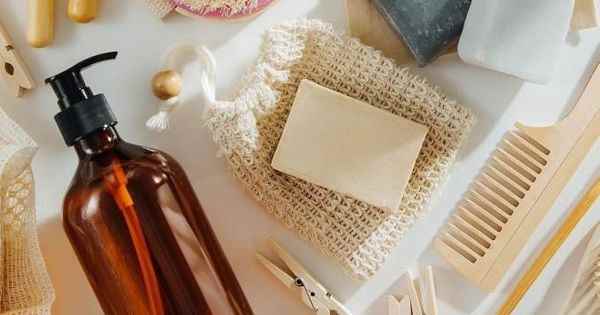Posted on 03/16/2021
3 min read
Solid “zero waste” shampoos, recyclable packaging, natural ingredients from sustainable sectors: the cosmetics industry is increasingly looking for growth in the areas of the environment or health.
The talk of sustainability is no longer just coming from small, traditional brands. L’Oréal has just recalled its objective of “95% bio-sourced ingredients, derived from abundant minerals or circular processes“by 2030. The French juggernaut, whose sales were around 28 billion euros last year, also launched a site two years ago to answer questions from the public on the ingredients used.
The American giant Coty also incorporates environmental and societal criteria in the development of its new products. Latest announcement, a partnership with LanzaTech, a company specializing in the production of ethanol from recycled waste gases.
The smallest Breton brand specializing in Briochin cleaning products (35 million euros in annual turnover) has launched a range of cosmetics in 2016, 100% certified organic.
Solid shampoos, multipurpose toiletry “bars”, she offers “simple formulas for several uses, with fewer products but which are suitable for the whole family“, underlines Caroline Cantin, Deputy Director General.
“Key factor” for some consumers
Certified organic and natural products still represent a tiny share of cosmetics sales in France: only 6.4%, or 970 million euros in 2020 on a total market estimated at nearly 16 billion euros, according to the Xerfi firm. .
But at a time when demand for beauty products in mature markets is stagnating, “organic is one of the segments that generates the most growth in absolute value“, affirms Benoît Samarcq, in charge of economic studies at Xerfi, evoking 8% last year.
Beauty forums are full of testimonials from consumers like Nina, who tells Beauty Test to be “came across a report (…) which spoke of the harmful ingredients present in cosmetics. It made me think, being in test baby I tell myself that maybe it’s time to be more careful“.
Popular consumer apps like Yuka are also keen to scan cosmetic ingredient lists for potentially harmful products, and help change habits.
“Even before the pandemic, we saw health concerns rise“, observes Hervé Navellou, CEO of L’Oréal France.
“Consumers, especially Gen Z and Millennials, already see sustainability as a key factor in their purchasing decisions“, also explains, in an email to AFP, Thierry Molière, head of research at Coty.
What commitment?
Faced with this “real underlying trend“, the industry is forced to adapt, according to Mathilde Lion, beauty expert for NPD Group:”10 years ago, it was the brands that spread their message. Now consumers have taken power, have these expectations. It’s up to brands to answer them.“
At a minimum, the big players “must have initiatives in favor of the environment or in favor of more transparency“, abounds Benoît Samarcq.
It remains to be seen what the real commitment is behind the marketing rhetoric.
“Just because a company buys an organic brand or uses bio-based plastic doesn’t mean that is enough“, warns Romain Ruth, president of the Cosmébio association, a label of organic cosmetics which brings together more than 450 companies in the sector in France.”We have to look for the label, whether it is a legal and scientific commitment.“
This can also make it possible to see more clearly in the multitude of labels extolling naturalness: labels such as for example Cosmebio, Natrue or Ecocert will “further than the ISO 16128 standard relating to organic cosmetics, published in 2017“, notes Benoît Samarcq.
According to this standard, accused by its detractors of promoting the “greenwashing“, an ingredient is considered as a natural derivative as soon as it contains more than 50% of natural materials. The rest can then come from the petrochemical industry.
“This is obviously not the case for labels and can be confusing for consumers.“, recognizes Mr. Samarcq.
.
dts5
